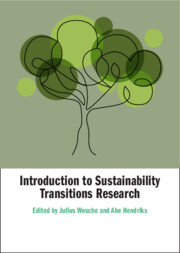Refine listing
Actions for selected content:
136787 results in Open Access
Foreword
-
-
- Book:
- The Question of Solidarity in Law and Politics
- Published online:
- 22 December 2025
- Print publication:
- 29 January 2026, pp xi-xvi
-
- Chapter
-
- You have access
- Open access
- HTML
- Export citation
6 - Poetics and Theatre Research in the Reconstruction of Afro-Latin American and Mapuche Lives in Argentina
- from Part II - Artistic Practices, Racism and Anti-Racism
-
-
- Book:
- Art and Anti-Racism in Latin America
- Published online:
- 19 December 2025
- Print publication:
- 29 January 2026, pp 205-233
-
- Chapter
-
- You have access
- Open access
- HTML
- Export citation
Foreword
-
- Book:
- Art and Anti-Racism in Latin America
- Published online:
- 19 December 2025
- Print publication:
- 29 January 2026, pp xvii-xviii
-
- Chapter
-
- You have access
- Open access
- HTML
- Export citation
5 - Indigenous Arts and Anti-Racism in Brazil
- from Part II - Artistic Practices, Racism and Anti-Racism
-
-
- Book:
- Art and Anti-Racism in Latin America
- Published online:
- 19 December 2025
- Print publication:
- 29 January 2026, pp 172-197
-
- Chapter
-
- You have access
- Open access
- HTML
- Export citation

Introduction to Sustainability Transitions Research
- Coming soon
-
- Expected online publication date:
- January 2026
- Print publication:
- 31 January 2026
-
- Book
- Export citation

Climate Politics
- Can't Live with It, Can't Mitigate without It
- Coming soon
-
- Expected online publication date:
- January 2026
- Print publication:
- 31 January 2026
-
- Book
- Export citation
Appendices
-
- Book:
- Securing Democracies
- Published online:
- 19 December 2025
- Print publication:
- 22 January 2026, pp 371-374
-
- Chapter
-
- You have access
- Open access
- HTML
- Export citation
Copyright page
-
- Book:
- Practices of Restitution
- Published online:
- 19 December 2025
- Print publication:
- 22 January 2026, pp viii-viii
-
- Chapter
-
- You have access
- Open access
- HTML
- Export citation
5 - England
-
- Book:
- Justice for Some
- Published online:
- 19 December 2025
- Print publication:
- 22 January 2026, pp 150-222
-
- Chapter
-
- You have access
- Open access
- HTML
- Export citation
Figures
-
- Book:
- The Materiality of Literature
- Published online:
- 19 December 2025
- Print publication:
- 22 January 2026, pp ix-x
-
- Chapter
-
- You have access
- Open access
- HTML
- Export citation
4 - Hybrid Action for a Hybrid World
-
-
- Book:
- Remote Work and Labor Institutions
- Published online:
- 12 December 2025
- Print publication:
- 22 January 2026, pp 59-80
-
- Chapter
-
- You have access
- Open access
- HTML
- Export citation
Copyright page
-
- Book:
- Minds, Freedoms and Rights
- Published online:
- 21 December 2025
- Print publication:
- 22 January 2026, pp iv-iv
-
- Chapter
-
- You have access
- Open access
- HTML
- Export citation
1 - How Remote Work Redefines Labor Institutions
-
-
- Book:
- Remote Work and Labor Institutions
- Published online:
- 12 December 2025
- Print publication:
- 22 January 2026, pp 13-25
-
- Chapter
-
- You have access
- Open access
- HTML
- Export citation
5 - Cyber Disinformation Risk Perception and Control
- from Part I - Challenges to Democratic Institutions
-
-
- Book:
- Securing Democracies
- Published online:
- 19 December 2025
- Print publication:
- 22 January 2026, pp 93-116
-
- Chapter
-
- You have access
- Open access
- HTML
- Export citation
Copyright page
-
- Book:
- Inter-Asian Law
- Published online:
- 16 December 2025
- Print publication:
- 22 January 2026, pp vi-vi
-
- Chapter
-
- You have access
- Open access
- HTML
- Export citation
Chapter 6 - Making-Good-Again? A Conclusion
-
- Book:
- Practices of Restitution
- Published online:
- 19 December 2025
- Print publication:
- 22 January 2026, pp 219-226
-
- Chapter
-
- You have access
- Open access
- HTML
- Export citation
3 - The Right to Personal Integrity
- from Part I - The Negative Dimension
-
- Book:
- Minds, Freedoms and Rights
- Published online:
- 21 December 2025
- Print publication:
- 22 January 2026, pp 52-85
-
- Chapter
-
- You have access
- Open access
- HTML
- Export citation
Contents
-
- Book:
- Minds, Freedoms and Rights
- Published online:
- 21 December 2025
- Print publication:
- 22 January 2026, pp v-vi
-
- Chapter
-
- You have access
- Open access
- HTML
- Export citation
Part I - The Negative Dimension
-
- Book:
- Minds, Freedoms and Rights
- Published online:
- 21 December 2025
- Print publication:
- 22 January 2026, pp 19-108
-
- Chapter
-
- You have access
- Open access
- HTML
- Export citation
1 - Neurorehabilitation in Criminal Justice
-
- Book:
- Minds, Freedoms and Rights
- Published online:
- 21 December 2025
- Print publication:
- 22 January 2026, pp 1-18
-
- Chapter
-
- You have access
- Open access
- HTML
- Export citation
